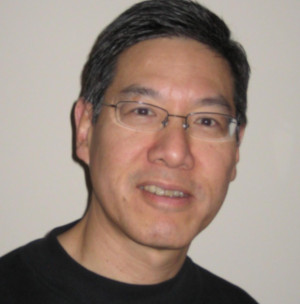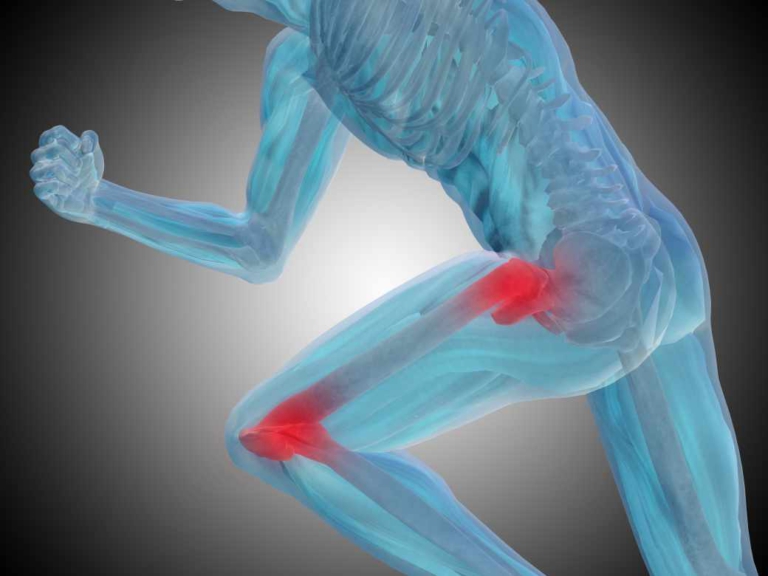An estimated 126.6 million Americans are affected by a musculoskeletal condition each year.
But diagnosing injuries and diseases of the bones, joints, ligaments, and muscles is extremely complex. In this exclusive interview, award winning MSK radiologist and member of the Society for Skeletal Radiology, Dr. Lawrence Yao, discusses some of the challenges in musculoskeletal imaging and reveals what patients can do to get more clarity and peace of mind on their test results.
[DocPanel] What are some of the biggest challenges in diagnosing injuries and diseases of the bones, joints, ligaments, and muscles?
[Dr. Yao] One of the biggest challenges is discerning what abnormalities are actually clinically relevant. With advanced imaging we’re able to see so many things now, but a lot of what we see is really just normal age-related wear and tear. Being able to differentiate what can be left alone and what can potentially become symptomatic is difficult. Understanding the aging process of bones, joints, muscles, and tendons plays a crucial role in accurately interpreting an image study.
There are also technical challenges – like small parts of the hand – that pose a great challenge in getting good images. So part of it is also technical. Image acquisition is crucial. Certain kinds of studies are just more technically difficult to perform and require particular hardware or software as well as expertise.
[DocPanel] Given the complexity of musculoskeletal imaging, is misdiagnosis a common issue?
[Dr. Yao] In the realm of sports injury and general orthopedics, misdiagnosis rates aren’t typically that high. With orthopedic oncology, there can sometimes be a delay in diagnosis. That’s where an expert second opinion is a really good idea. It can be extremely helpful, even if it’s only to confirm the original diagnosis. Especially if there’s a developing mass. Before a patient begins treatment, you need to make sure you know exactly what you’re dealing with.
Now, fortunately, you don’t see that too often. However, what you do see fairly often is something of the opposite, where too much is done. Especially when a patient is really worried – over treating happens a lot. An experienced specialist can be really helpful in alleviating some of the anxiety for the patient. There doesn’t need to be a rush to judgement. A lot of injuries will heal on their own. But the decision to operate usually comes down to the discretion of the surgeon. Communication and a good report from the radiologist play an important role because it will influence the decisions made by the surgeon, primary physician, and patient. So, again, a second opinion can come in handy and potentially prevent overdiagnosis.
CONNECT WITH A SPECIALIST
Get a Second Opinion
Take charge of your health with an online second opinion from a radiology specialist.
[DocPanel] Are there any emerging trends that you’ve noticed in musculoskeletal imaging, particularly in terms of patient care.
[Dr. Yao] The place of radiology is continuously changing because of all the new technology. Nowadays, much of the contact between physicians, radiologists, and patients is electronic. And there’s definitely been an increase in interest from patients to have access to their information in a timely fashion – so making things digital is great in that sense.
But patients also want more direct access to physicians and medical professionals. This is an area that still needs work. I think how to better facilitate communication within radiology is an ever-evolving question, and one is that reshaping everyone’s role a bit.
[DocPanel] What are some issues that can arise from poor communication between patient-physician-radiologist?
[Dr. Yao] A case can become very complicated If someone has already been treated for something – especially if that treatment altered anatomy or created a clinical context that may be less comfortable for someone who hasn’t dealt with those kinds of surgical procedures before. If all the information and prior studies aren’t accurately relayed to the new radiologist handling the case, or if the correct subspecialist isn’t sought out for the particular patient, it can have an impact on the way the image is interpreted, which will ultimately affect the diagnosis.
[DocPanel] What can a patient do to improve communication with their radiologist, even if they don’t have the opportunity to engage in direct communication?
[Dr. Yao] In musculoskeletal imaging, individual study findings by
themselves uncommonly dictate patient management. It’s always about how it fits into the larger picture. And how it matches the symptoms the patient is presenting. The information (and amount of information) that a radiologist has going into an image study plays a big role in the way it’s interpreted.
Patients can help facilitate communication by encouraging their physician to relay as much information as possible to the radiologist reading their case. And as radiologists, we need to keep up with evolving developments, and we need to be aware of the new treatments a referring physician might be considering for a particular type of disease or injury. When we write up a report after interpreting an image, we’re really just giving one piece of the puzzle.
As far as direct communication, a second opinion can be an extremely valuable avenue. For example, through DocPanel, patients can engage directly with the radiologist reviewing their case. They can ask questions, send over previous scans, and get a detailed second opinion report that actually makes sense to them. It’s something that should be utilized especially in complex cases.
[DocPanel] For patients with chronic pain, it can be really frustrating when imaging tests don’t lead to answers. What advice do you have for patients with concerning pain but normal test results?
[Dr. Yao] Chronic pain is a specialty of its own – it can be very difficult to diagnose, especially in spine cases. The primary physician is ultimately the one who decides whether or not something needs to be done, so a second opinion can be really useful in these types of cases.
A lot of things do get better on their own – but, regardless, many patients just want to understand and know how to manage their activities better. That takes us back to communication. Second opinions come in handy because they give patients an opportunity to ask questions and have their concerns answered. The more detailed a report can be, the better advice a physician can give.
[DocPanel] In what other instances do you think a second opinion can play an important role for patients?
[Dr. Yao] Musculoskeletal imaging is very subspecialized, and within subspecialties – there are experts in very narrow areas. It’s great to be able to access some of that expertise, especially when you encounter something unusual.
A lot of patients don’t have confidence in the care that they’re getting. I think a lot of that may be due to poor communication. The healthcare system is so fragmented that a lot of patients are left on their own in terms of coordinating their care. In addition, there are a lot of well-educated patients who are reading up on their health and want to be informed. A combination of those factors helps patients feel more comfortable when they get a second opinion. And I think that’s a good idea for serious conditions. There is a lot of variability in the level of expertise. Seeking out a second opinion from a subspecialist with specific experience in what you’re dealing with can really make a huge difference.

Dr. Yao is an award winning MSK radiologist and member of the Society for Skeletal Radiology, International Skeletal Society, Radiological Society of North America, and the American Roentgen Ray Society. He earned his MD from Brown University and completed his fellowship training in musculoskeletal imaging at the UCLA Center for the Health Sciences in Los Angeles, where he later served as Director of Musculoskeletal MRI at UCLA. In the past, he has also held positions as Director of MRI at the Clinical Center at the National Institutes of Health and Associate Professor of Radiology at UCLA and at Georgetown University.
Have your images read by Dr. Yao and other academic level subspecialists with DocPanel. Take charge of your health with a second opinion today.
